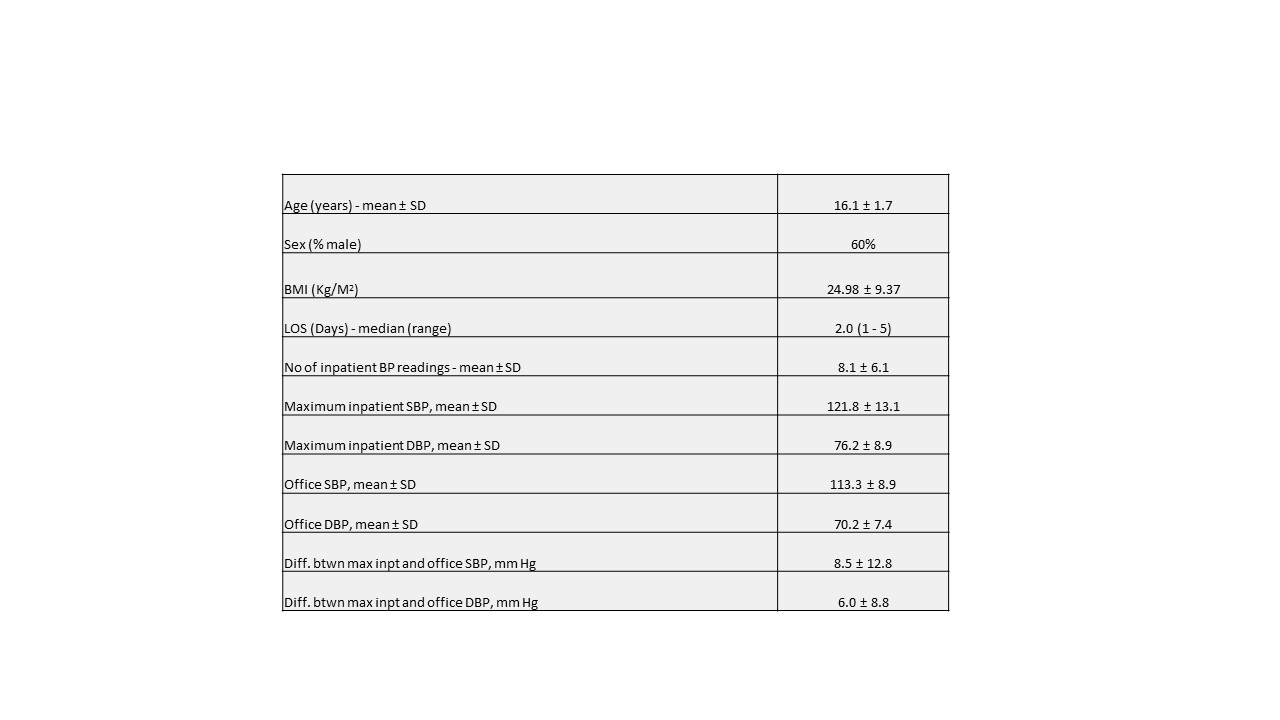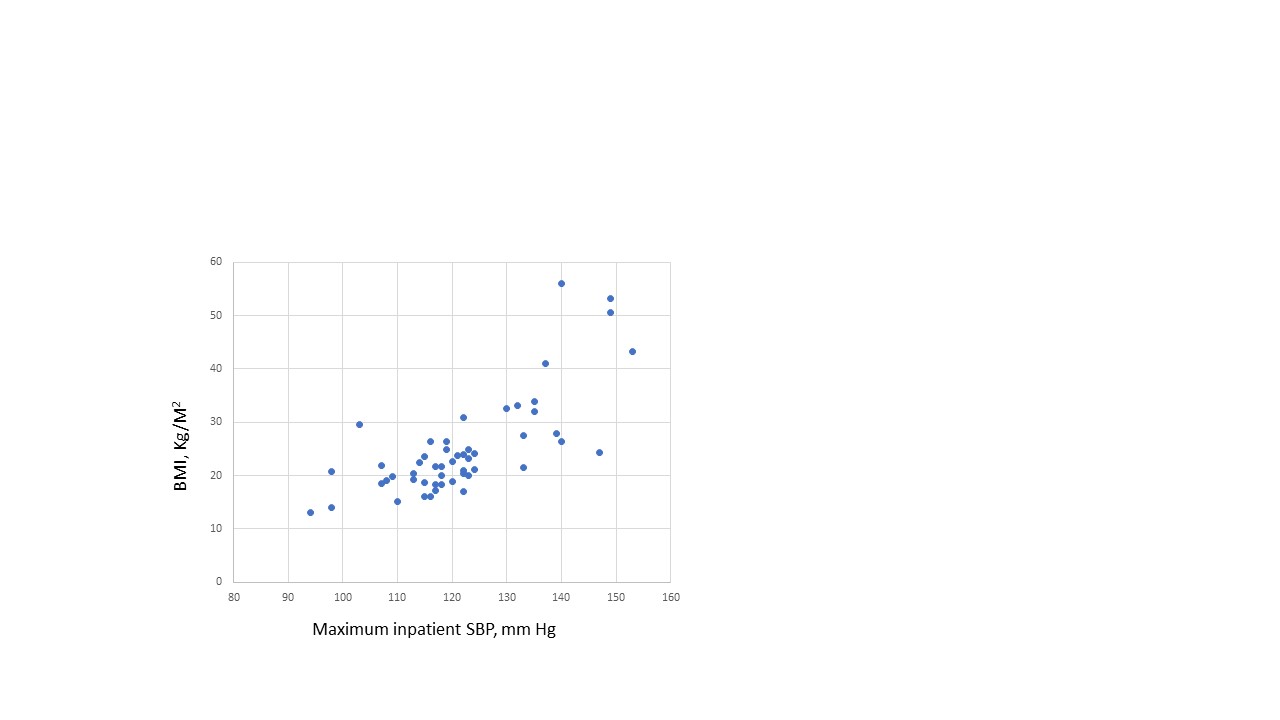Hypertension
Hypertension 1
14 - Prevalence of high blood pressure in hospitalized pediatric patients
Publication Number: 14.321
- NG
Neena R. Gupta, MD (she/her/hers)
Associate Professor Chief, Division of Pediatric Nephrology
University of Massachusetts Medical School
Worcester, Massachusetts, United States
Presenting Author(s)
Background:
There is paucity of data on changes in blood pressure (BP) during hospitalization in pediatric patients. Normative data are from outpatient measurements.
Objective: Determine the prevalence of high BP in hospitalized pediatric patients and quantify the change as compared to a stable office BP.
Design/Methods: For this retrospective chart review study, EHR query was done for patients admitted during Oct 2017 to Sept 2018 who were 13–18-year-old with at least 2 inpatient (inpt) BP values and length of stay 1 to 5 days. Data was extracted from consecutive first 65 patients in the list (work in progress for more). After excluding for renal cause of admission, missing office BP, 52 patients were included in the analysis and various BP parameters were derived. Using AAP 2017 guideline, BP was classified as elevated (SBP >120) or hypertensive range (SBP >130, DBP > 80). Office BP closest to admission date in the + 31 to 180 days was taken.
Results:
See table 1. Of the 52 patients, 27 (52%) had at least one elevated SBP reading and 14 (27%) had at least one SBP reading in hypertensive range. Of the total 422 Inpt BP readings, there were 102 elevated SBP (24%), 41 hypertensive SBP (10%) and 37 high DBP (9%) readings. A significant correlation was seen between maximum inpt SBP and office SBP (r=.38, p=.002, figure 1). Maximum inpt SBP was also highly correlated with BMI (r=.74, p=< .0001, figure 2). Office SBP was elevated in 11 (21%) and hypertensive in 1 (1.9%). However, most patients with elevated inpt SBP did not have elevated office BP (p=.88, chi square test).
Conclusion(s):
There is a high prevalence of elevated BP readings during hospital admission and a significant correlation between maximum inpt SBP with BMI as well as with office SBP. We excluded office BP within +30 days of admission to avoid the effect of illness on BP. We also used different metrics to assess inpt BP changes as compared to other studies. Based on the significant correlation of Maximum inpt SBP with BMI and office SBP, further study is needed to see if patients reacting with a larger increase in BP in response to stresses of the inpatient stay may be at risk developing high BP later on. 
.jpg)

